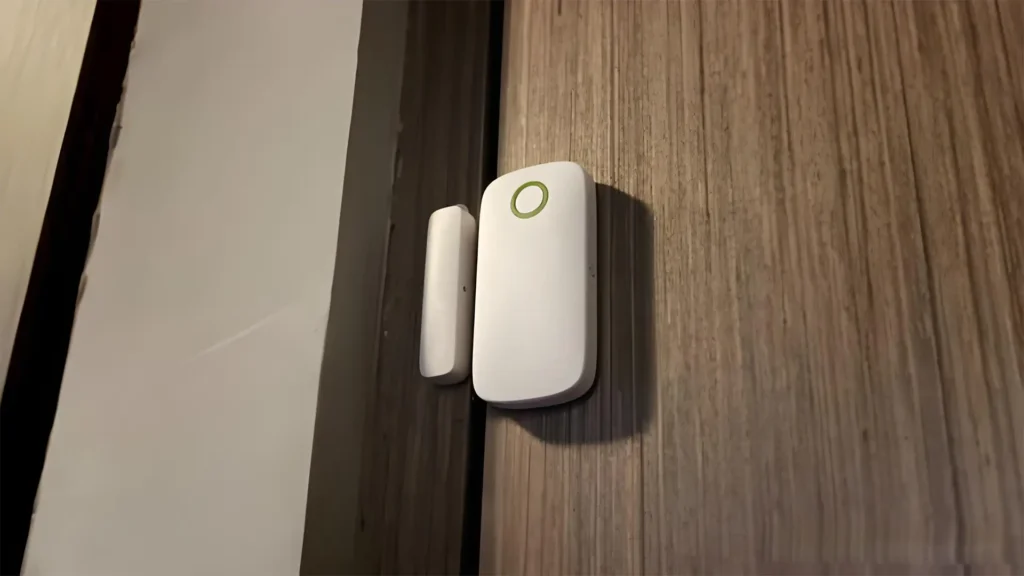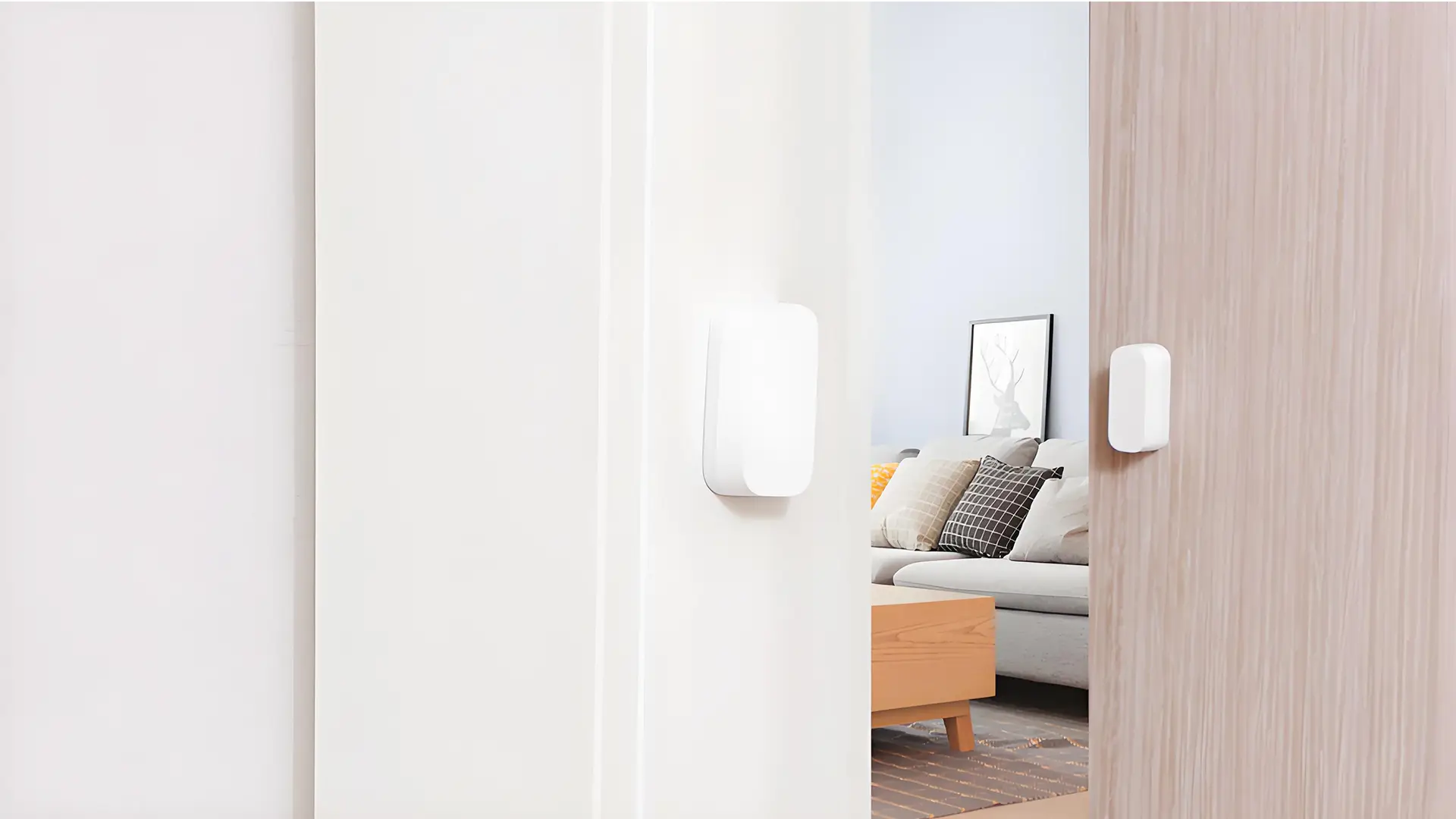In today’s rapidly advancing technology, smart homes have become a part of modern life. They not only greatly improve our quality of life, but also allow us to experience unprecedented convenience and safety. Among numerous smart home devices, WiFi door sensor have become the “gatekeepers” in many home security systems due to their unique functions and wide application scenarios.
Whether at home or in the office, Wi-Fi door sensors will monitor the opening and closing of each door in real-time. This article will provide a detailed introduction to the working principle, functional characteristics, application scenarios, installation and maintenance methods of Wi-Fi door magnetic sensors, leading everyone to explore this new member in the field of smart homes.
What is a WiFi Door Sensor?
WiFi smart door sensor, also known as WiFi door magnetic sensor, is a security alarm device that integrates WiFi communication technology. The WiFi smart door sensor will monitor the real-time changes in the door’s opening and closing, and send this information to the cloud server and user’s phone through the WiFi gateway. The main components of WiFi door sensors are:
- Magnetic sensor: used to detect changes in door opening or closing.
- WiFi communication module: used to send the change information of door opening or closing to the background through WiFi.
How Do WiFi Door Sensors Work?
The Wi-Fi door magnetic sensor mainly consists of two parts: a magnet and a sensor. Magnets are usually installed on door frames, while sensors are installed on doors, and the two interact through magnetic fields. When the door is in the closed state, the magnet is closely connected to the sensor, forming a complete magnetic field circuit. At this time, the sensor is in a “sleep” state and does not send any signals. Once the door is opened and the distance between the magnet and the sensor exceeds a certain range, the magnetic field circuit is broken, the sensor is immediately activated, and this information is sent to the cloud server or directly to the user’s mobile app through the built-in Wi-Fi module, thereby achieving remote monitoring and instant alarm.
The mechanism of WiFi door sensor is as follows:
Magnetic sensor: A magnetic sensor consists of a magnet and a sensor. When the door opens or closes, the sensor detects the change in the magnet and converts it into an electrical signal.
WiFi module: The WiFi module sends signals to the WiFi gateway and then sends this information to the cloud server.
Mobile app: It will receive information sent by the door sensor and display it to the user. The app can also directly set the door sensor.

Benefits of Using WiFi Door Sensors
WiFi door sensors offer a variety of blessings that enhance convenience, security, and efficiency:
Real-Time Alerts
The WiFi door sensor will notify you immediately every time the door is opened or closed. When there is illegal intrusion into the house, we can receive relevant information in a timely manner, so that we can deal with it in a timely manner, which is very effective in preventing illegal intrusion.
Remote Monitoring
Through the internal WiFi module, WiFi door sensors can transmit information to various parts of the world through the network. Whether you are on a beach vacation or working at a company, users can monitor changes in the opening or closing of their home doors through relevant applications.
Easy Installation
The installation of WiFi door sensors is very simple, align and install two different parts on the door frame and door respectively. Some WiFi door sensors are fixed with screws, while others are fixed with glue.
Integration with Smart Home Systems
WiFi door sensors can connect with broader smart home ecosystems, such as Amazon Alexa, Google Home, and Apple HomeKit. This integration permits you to:
- Automate responses (e.G., turning on lights while a door opens).
- Create a comprehensive security system that consists of cameras, alarms, and locks.
Energy Efficiency
The standby power of WiFi door sensors is very low and consumes almost no power. They are only triggered when the door is open, which causes the door sensor to sleep for the majority of the time, greatly reducing its power consumption.
Cost-Effective Security
Compared to conventional safety structures, WiFi door sensors are extra low-cost and don’t require month-to-month subscription costs.
Top Use Cases for WiFi Door Sensors
Home Security
The main purpose of WiFi door sensors is to decorate home security. When a home is invaded illegally, the door sensor will emit a beep sound and send the information to the user to avoid damage to the home.
Monitoring Vulnerable Entry Points
In some areas, garages and basements are high-risk areas for illegal intrusion. Installing door sensors at garage doors and basement entrances can prevent damage and theft to garages and basements.
Child Safety
Parents can use WiFi door sensors to reveal doorways main to potentially risky regions, together with the outside, pool, or basement.
Business Applications
WiFi door sensors can be installed in warehouses and storage rooms, as well as in workplaces. They provide insights into the working hours and leisure activities of commercial enterprises.
Elder Care
For households with aged own family participants, WiFi door sensors can alert caregivers to uncommon activity, inclusive of a person leaving the house at peculiar hours.
Key Features to Look for When Buying a WiFi Door Sensor
Brand and Quality
Choose well-known WiFi smart door sensors to ensure product quality and after-sales service. At the same time, pay attention to checking the certification information of the product, such as CE, FCC and other certification marks.
Compatibility
Ensure the sensor will work with your existing smart home system. Seek options that work with either Alexa, Google Home, or Apple HomeKit.
Battery Life
It’s imperative for batteries to have a long life for convenience. A few models boast batteries lasting as long as two years.
Range and Connectivity
Choose a sensor with good WiFi connectivity to ensure that its performance is reliable, even at the farthest corners of your home.
User-Friendly App
A well-designed app enhances the user experience. Look for features like:
- Real-time alerts.
- Activity logs.
- Customizable notification settings.
Durability and Weather Resistance
For outdoor doors or garages, opt for sensors that can withstand harsh weather conditions.
Customizable Settings
Advanced sensors offer options to tailor notifications based on time, activity level, or specific doors.
Installation convenience
Choose products that are easy to install and do not require complex wiring to save installation time and costs. At the same time, pay attention to the installation guide and tutorial of the product to ensure correct installation and use.
Best WiFi Door Sensors in the Market
Following are some top-rated WiFi door sensors for one’s consideration:
- Ring Alarm Contact Sensor
- Features : Compatibility with the Ring Alarm System, Easy Setup, Long Battery Life.
- Pros:Integrates with Ring’s ecosystem, which is affordable.
- Cons:Requires the Ring Alarm base station.
- Wyze Contact Sensor
- Features: Inexpensive, sends notifications via an app, and works with Wyze cameras.
- Pros: Very affordable, easy to install.
- Cons: Limited range.
- Eve Door & Window Sensor
- Features: Integrates with Apple HomeKit, energy efficiency.
- Pros: Privacy-centric, brilliant app interface.
- Disadvantages:Highly costly as compared to the rivals.
- Aqara Door and Window Sensor
- Features: small in size and integrates with Zigbee hubs.
- Pros: Inexpensive, wider compatibility.
- Cons: Requires a hub for complete functionality.
- Samsung SmartThings Multipurpose Sensor
- Features:Multipurpose: it detects temperature, vibration, and movement
- Pros: Multifunctional and Integrates well with SmartThings Hub.
- Cons:
Installation and Maintenance Tips
Installation
- Select the Correct Location:Install Sensors on doors which need monitoring-like front door, backdoors, and windows.
- Clean the Surface:The surface must be clean and dry for the sensor attachment.
- Attach Sensor: Adhesive or screws are used depending on the model.
- Test Setup:Opening and closing the door should be done to check whether the sensor is okay.
Maintenance
- Regular Battery Checks: Replace batteries as needed to avoid disruptions.
- Clean the Sensor: Dust and debris can interfere with performance.
- Update Firmware: Keep the app and sensor firmware updated for optimal performance.
Potential Drawbacks and Limitations
WiFi Dependency
WiFi door sensors rely on stable internet connections. Poor connectivity can lead to delayed alerts or missed notifications.
Privacy Concerns
Like any connected device, WiFi door sensors can be vulnerable to hacking. Opt for models with robust security features, such as encryption.
Compatibility Challenges
Some sensors may not work with all smart home ecosystems. Always check compatibility before purchasing.
Final Thoughts: Are WiFi Door Sensors Worth It?
WiFi door sensors are a powerful combination of security, convenience, and affordability in one. They are an excellent investment for anyone looking towards monitoring their home or business to enhance safety and enjoy peace of mind. While they have their limitations, such as their dependency on WiFi, generally speaking, the pros weigh much heavier than the cons in most users’ eyes.
The Wi-Fi smart door sensor produced by SmartDoorSensors has high quality and reasonable price, and has provided security protection for many households around the world, greatly improving their safety.







